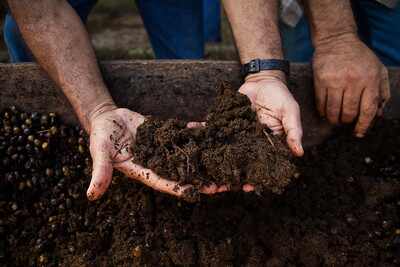5 Air Pollution Control Measures Explained
Air pollution control measures are; energy conservation, recycling, material and energy substitution, monitoring and implementation, and forestation.
This article discusses air pollution control measures, as follows;
1). Energy Conservation (as one of the Air Pollution Control Measures)
The conservation of energy is related to air pollution because of the role of energy resources in producing air pollutants in the course of their conversion and utilization.
In the same vein, conservation of energy reduces air pollution by reducing the rate at which energy is consumed, and thereby also the rate at which pollutants are produced and released into the atmosphere.
An example of the function of energy resources in causing air pollution can be observed in their conversion, during the process of electricity generation.
Fuel combustion in portable electric generators and power plants, is a prominent cause of environmental degradation, which occurs in the form of airborne emissions that can affect human health, climate, and the entire ecosystem [1].
Measures to conserve energy re collectively aimed at mitigating the loss of waste energy and its accompanying products which actively reduce air quality.
Such measures include regulation of appliance usage, and establishment of energy efficiency through the use of improved technology..
Energy conservation is an instantaneous and effective control measure that can help to address all kinds of air pollution including indoor and outdoor.
2). Recycling
Recycling reduces air pollution, by minimizing the volume of waste that is disposed and treated on a regular basis.
Many of the methods of waste disposal and treatment, contribute to air pollution.
These include the use of landfills, and the practice of incineration, torrefaction, pyrolysis and anaerobic digestion, among others.
When recyclable waste materials are removed from the stream of waste being sent for treatment or disposal, the effects of these practices and methods of disposal, on air quality are mitigated.
3). Material and Energy Substitution (as one of the Air Pollution Control Measures)
Substitution of raw materials can help reduce or control air pollution, especially when these materials have been identified as contributors to the problem or active-producers of air pollutants.
Material substitution is a concept under the theme of sustainability, which refers to the act and process of replacing conventional materials with greener or more sustainable ones [3].
The concept is often used within the context of manufacturing and production, where the materials being substituted are those that are required for the creation or manufacture of products.
It (material substitution) is essential for circular economic growth, and can help to address various forms of socioeconomic decline and environmental degradation.
The same concept used in substitution of raw materials, can also be applied when making a choice of energy resources to be used.
It is important to note that the term ‘substitution’ used here is not same as energy ‘transition’; which is a potential solution to air pollution, rather than a control measure.
Energy substitution helps to control or reduce air pollution, by reducing the volume of pollutants that are released during energy conversion or consumption.
4). Monitoring and Implementation
Air pollution is monitored and controlled by analyzing the composition of air on an interval basis, comparing the data over a given period, and making decisions based on the derived information.
These steps summarize the process of air pollution monitoring and implementation.
Equipment used to monitor air pollution include portable and station sensors.
These are electronic devices that could be supported by artificial intelligence, to boost their accuracy and performance.
Air pollution monitoring is used to evaluate compliance of public and private entities, with air quality guidelines; as well as the general quality levels of air in a given area.
Types of air monitoring are; indoor, in-duct, stack emission-based, ambient-static and ambient-mobile monitoring. They are categorized based on the location and conditions of monitoring.
Implementation itself is simply the steps taken to optimize or maintain air quality, and is usually based on information derived from monitoring.

5). Forestation (as one of the Air Pollution Control Measures)
Since deforestation is linked to increase in air pollution and climate change rates [2], it is not difficult to predict that forestation can help control air pollution.
‘Forestation’ here refers to all forms of regional vegetation increase; including reforestation, re-vegetation and afforestation.
The ability of forestation to control air pollution is a function of the natural role of plants or forests as carbon sinks and air purifiers.
Nearly all kinds of air pollutants can be controlled through forestation, including particulate matter and toxins.
These pollutants are either intercepted or absorbed by plants in the course of their metabolism, thereby improving air quality within the environs.
Conclusion
Air pollution control measures are;
1. Energy Conservation
2. Recycling
3. Material and Energy Substitution
4. Monitoring and Implementation
5. Forestation
References
1). Adefeso, I.; Sonibare, J.; Akeredolu, F; Rabiu, A. (2012). “Environmental Impact of Portable Power Generator on Indoor Air Quality.” International Conference on Environment, Energy and Biotechnology, Malaysia. Available at: https://www.semanticscholar.org/paper/Environmental-impact-of-portable-power-generator-on-Adefeso-Sonibare/71110191123e520193c82a120dcdbd1c18ea7631. (Accessed 1 December 2022).
2). Luisetto, M.; Almukhtar, N.; Edbey, K.; Fiazza, C.; Rafa, A. Y.; Mashori, G. R.; Yurevich, L. O. (2021). “Deforestation, Air Pollution and Brazilian COVID-19 Variant.” Available at: https://doi.org/10.46889/JCIM.2021.2103. (Accessed 1 December 2022).
3). Naqi, A.; Jang, J. G. (2019). “Recent Progress in Green Cement Technology Utilizing Low-Carbon Emission Fuels and Raw Materials: A Review.” Sustainability 11(2):537. Available at: https://doi.org/10.3390/su11020537. (Accessed 1 December 2022).



